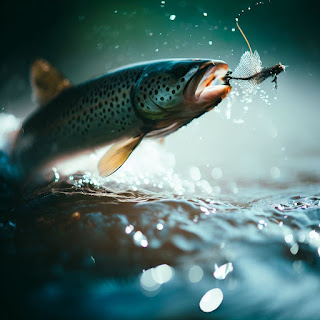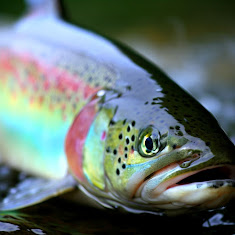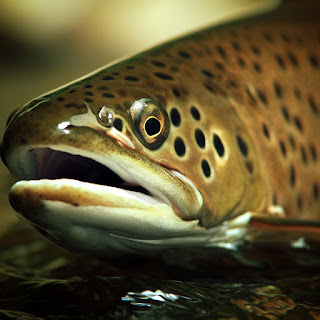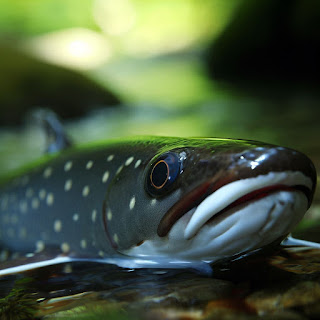Mastering the Art of Trout Fishing in America: Your Comprehensive Guide to Success on the Water
On September 24, 2023 by fishingamericatoday StandardDive into the World of Trout Fishing in America: Expert Tips, Prime Locations, and Conservation Insights Await
Table of Contents
- Introduction to Trout Fishing
- Trout Species in America
- Tackle and Licenses for Trout Fishing
- Bait Fishing for Trout
- Lure Fishing for Trout
- Fly Fishing for Trout
- Best Trout Fishing Locations in America
- Conservation and Ethical Fishing Practices
- Safety Tips for Trout Fishing
- Conclusion
Introduction to Trout Fishing
Trout fishing is a popular activity in America due to the abundance of trout species and the availability of fishing spots.
Trout are cold-water fish, making them an ideal target for anglers in cooler climates or regions that experience seasonal changes.
The thrill of hooking a trout and the challenge of reeling it in make trout fishing an exciting and rewarding experience.
Trout can be found in lakes, ponds, rivers, and streams, offering anglers a variety of fishing environments to choose from.
They are known for their beautiful colors and their ability to put up a fight when hooked.
The most common trout species in America include rainbow trout, brown trout, brook trout, and lake trout (also known as Mackinaw).
- Trout Species in America
America is home to a variety of trout species, each with its own unique characteristics and habitat preferences. Understanding the different trout species can help you target specific fish and tailor your fishing techniques accordingly.
Rainbow Trout
Rainbow trout are native to the Pacific Northwest but have been introduced to rivers and lakes across the country.
Brown Trout
Brown trout are native to Europe but have been introduced to rivers and lakes throughout America.
Brook Trout
Brook trout, also known as speckled trout or brookies, are native to eastern North America.
Lake Trout (Mackinaw)
Lake Trout (Mackinaw): Lake trout are native to the Great Lakes region and are also found in other cold, deep lakes across America.
Tackle and Licenses for Trout Fishing
Before you embark on your trout fishing adventure, it’s important to have the right tackle and licenses. Here are some essential items you’ll need:
Rod and Reel for Trout Fishing
A medium-action spinning or casting rod is a good starting point for trout fishing. Look for a rod that is approximately six feet in length, as this provides a good balance of sensitivity and casting distance. Pair your rod with a reel that is suitable for the line weight you’ll be using.
Trout Fishing Line and Leader
For most trout fishing situations, a six-pound test line is a good choice. You can opt for monofilament or fluorocarbon line, depending on your personal preference. It’s also a good idea to use a lighter leader than your main line, as this can increase your chances of getting a bite.
Trout Fishing License
In most areas, you’ll need to purchase a fishing license before you can legally fish for trout. Fishing licenses are typically available for different time periods, ranging from a day to a year. Some states offer reduced-price licenses for certain groups, such as seniors or disabled individuals. Be sure to check the fishing regulations in your area and obtain the necessary licenses before you start fishing.
- Bait Fishing for Trout
Bait fishing is one of the most common and effective techniques for catching trout. Whether you’re fishing in a lake, pond, river, or stream, bait fishing can yield great results. Here are some tips and techniques for bait fishing for trout:
Natural Trout Baits
Many anglers prefer using natural baits when targeting trout. Nightcrawlers, earthworms, and salmon eggs are all popular choices. These baits closely resemble the trout’s natural food sources and can entice them to bite. When using natural baits, it’s important to present them in a way that mimics their natural movement. This can be achieved by using a float or by allowing the bait to drift naturally with the current.
Artificial Trout Baits
Artificial baits, such as PowerBait or other dough baits, can also be highly effective for trout fishing. These baits come in a variety of colors and scents, making them irresistible to hungry trout. One popular technique is to mold the dough bait onto a small treble hook, allowing it to float just above the bottom. This technique is especially effective when fishing in lakes or ponds.
Trout Bait Hooks and Rigs
When bait fishing for trout, it’s important to use the right hooks and rigs. For natural baits, such as worms or salmon eggs, a traditional bait-holder hook in medium sizes works well. Treble hooks are often used with dough baits, as they help keep the bait on the hook. When rigging your bait, consider using a sliding sinker or a float, depending on the fishing conditions and the depth at which the trout are feeding.
- Lure Fishing for Trout
Lure fishing is another popular technique for catching trout. Lures are designed to imitate the trout’s natural prey and can be highly effective in enticing them to strike. Here are some common types of lures used for trout fishing:
Spinners
Spinners, such as Mepps or Blue Fox, are popular lures for trout fishing. These lures consist of a spinning blade and a dressed hook, which creates vibrations and flashes that attract trout. Spinners can be cast and retrieved or trolled behind a boat. Experiment with different sizes and colors to find the most effective spinner for your fishing conditions.
Spoons
Spoons, such as Kastmaster or Little Cleo, are another effective lure for trout fishing. These lures have a curved shape that mimics the movement of a wounded fish. Spoons can be cast and retrieved or trolled at different depths to target trout in various water conditions. Similar to spinners, experimenting with different sizes and colors can help you determine the best spoon for your fishing situation.
Jigs
Jigs are versatile lures that can be used for both casting and vertical jigging. They consist of a weighted head and a dressed hook, which creates an enticing action when jigged through the water. Jigs can be dressed with soft plastic tails or tipped with bait to increase their effectiveness. When using jigs, vary your retrieval speed and depth to find the trout’s preferred feeding zone.
Plugs or Crankbaits
Plugs or crankbaits are effective lures for targeting larger trout. These lures mimic the movements of small fish or other prey, making them irresistible to hungry trout. Plugs can be cast and retrieved, trolled, or even twitched along the surface to trigger aggressive strikes. Experiment with different diving depths and retrieve speeds to find the most effective plug for your fishing conditions.
- Fly Fishing for Trout
Fly fishing is often considered the pinnacle of trout fishing and offers a unique and rewarding angling experience. Fly fishing utilizes lightweight rods and specialized lines to cast lightweight flies onto the water’s surface. Here are some key aspects of fly fishing for trout:
Fly Rods, Reels, Line, and Flies
To get started with fly fishing, you’ll need a fly rod, reel, fly line, and flies. Fly rods are typically lightweight and flexible, allowing for delicate presentations and accurate casts. Fly reels are designed to hold the fly line and provide drag when fighting a fish. Fly lines come in different weights and tapers, with weight-forward lines being the most common choice for trout fishing. Flies are tied to imitate insects, baitfish, or other trout food sources and come in a variety of sizes and patterns.
Casting Techniques
Casting is a fundamental skill in fly fishing. There are different casting techniques, such as the overhead cast, roll cast, and false cast. Learning these techniques and practicing your casting accuracy will greatly improve your chances of success. Taking lessons from a qualified instructor or joining a local fly fishing club can help you refine your casting skills and gain valuable insights into the art of fly fishing.
Fly Selection and Presentation
Choosing the right fly and presenting it convincingly are crucial aspects of fly fishing for trout. Matching the hatch, which means using flies that closely resemble the insects or other food sources present in the water, is often the key to success. Observing the trout’s feeding behavior and the natural insect activity can guide your fly selection. Presenting the fly in a natural manner, whether on the surface or below, is essential for enticing trout to strike.
- Best Trout Fishing Locations in America
America offers an abundance of trout fishing locations, each with its own unique characteristics and angling opportunities. Here are some of the best trout fishing spots across the country:
Arizona
Arizona is home to several trout fishing hotspots, including the White Mountains and the Mogollon Rim. Lakes such as Big Lake, Woods Canyon Lake, and Becker Lake are known for their trophy trout fishing.
California
California offers a wide range of trout fishing opportunities, from the high Sierra Nevada mountains to the coastal streams. The renowned Hat Creek, Owens River, and Truckee River are popular destinations for fly fishing enthusiasts.
Colorado
Colorado is famous for its trout fishing, with the Arkansas River, Fryingpan River, and South Platte River being top choices for anglers. The state also has numerous high-altitude lakes and reservoirs that offer excellent trout fishing.
Oregon
Oregon is a paradise for trout anglers, with iconic rivers such as the Deschutes, McKenzie, and Rogue attracting fly fishing enthusiasts. The state also boasts countless lakes and reservoirs that are stocked with trout.
Washington
Washington offers diverse trout fishing opportunities, from the Olympic Peninsula’s coastal rivers to the high alpine lakes of the Cascade Range. The Yakima River, Methow River, and Lake Chelan are popular destinations for trout fishing.
These are just a few examples of the many trout fishing locations in America. Each state has its own unique fishing spots, so be sure to research and explore the trout fishing opportunities in your area.
- Conservation and Ethical Fishing Practices
As anglers, it’s important to practice conservation and ethical fishing to ensure the sustainability of trout populations and their habitats. Here are some guidelines to follow:
- Practice catch and release: If possible, release the trout you catch back into the water to maintain healthy populations. Handle the fish with care and minimize stress during the release process.
- Respect fishing regulations: Familiarize yourself with the fishing regulations in your area and adhere to size limits, bag limits, and other restrictions. These regulations are in place to protect the fish and their habitats.
- Dispose of fishing waste properly: Do not leave fishing lines, hooks, or other tackle in the water or on the shore. Dispose of any fishing waste in designated receptacles to prevent it from harming wildlife or the environment.
- Preserve the habitat: Be mindful of your impact on the trout’s habitat. Avoid trampling vegetation, disturbing spawning areas, or polluting the water. Leave the fishing spot cleaner than you found it.
By following these practices, you can contribute to the conservation of trout populations and ensure that future generations can enjoy the thrill of trout fishing.
- Safety Tips for Trout Fishing
Trout fishing can be a safe and enjoyable activity if proper precautions are taken. Here are some safety tips to keep in mind:
- Wear appropriate clothing and footwear: Dress in layers to adapt to changing weather conditions and wear sturdy, non-slip footwear to prevent accidents on slippery surfaces.
- Use sunscreen and insect repellent: Protect your skin from the sun’s harmful rays and apply insect repellent to avoid bug bites.
- Be aware of your surroundings: Pay attention to your surroundings and be cautious of potential hazards, such as swift currents, slippery rocks, or wildlife.
- Stay hydrated and bring snacks: Carry an ample supply of water and nutritious snacks to keep yourself hydrated and energized throughout your fishing trip.
- Inform someone of your plans: Before heading out, let someone know your fishing plans, including your intended location and estimated return time. This ensures that someone is aware of your whereabouts in case of an emergency.
By following these safety tips, you can minimize risks and enjoy a safe and memorable trout fishing experience.
- Conclusion
Trout fishing in America offers endless opportunities for anglers of all skill levels. Whether you prefer bait fishing, lure fishing, or fly fishing, there’s a trout fishing technique that suits your style. By understanding the different trout species, using the right tackle, and exploring the best fishing locations, you can increase your chances of success on the water. Remember to practice conservation and ethical fishing practices to protect the trout populations and their habitats. Stay safe, respect the environment, and enjoy the thrill of trout fishing in some of the most beautiful landscapes America has to offer. Happy fishing!
You may also like
Archives
Calendar
| S | M | T | W | T | F | S |
|---|---|---|---|---|---|---|
| 1 | 2 | |||||
| 3 | 4 | 5 | 6 | 7 | 8 | 9 |
| 10 | 11 | 12 | 13 | 14 | 15 | 16 |
| 17 | 18 | 19 | 20 | 21 | 22 | 23 |
| 24 | 25 | 26 | 27 | 28 | 29 | 30 |





Leave a Reply